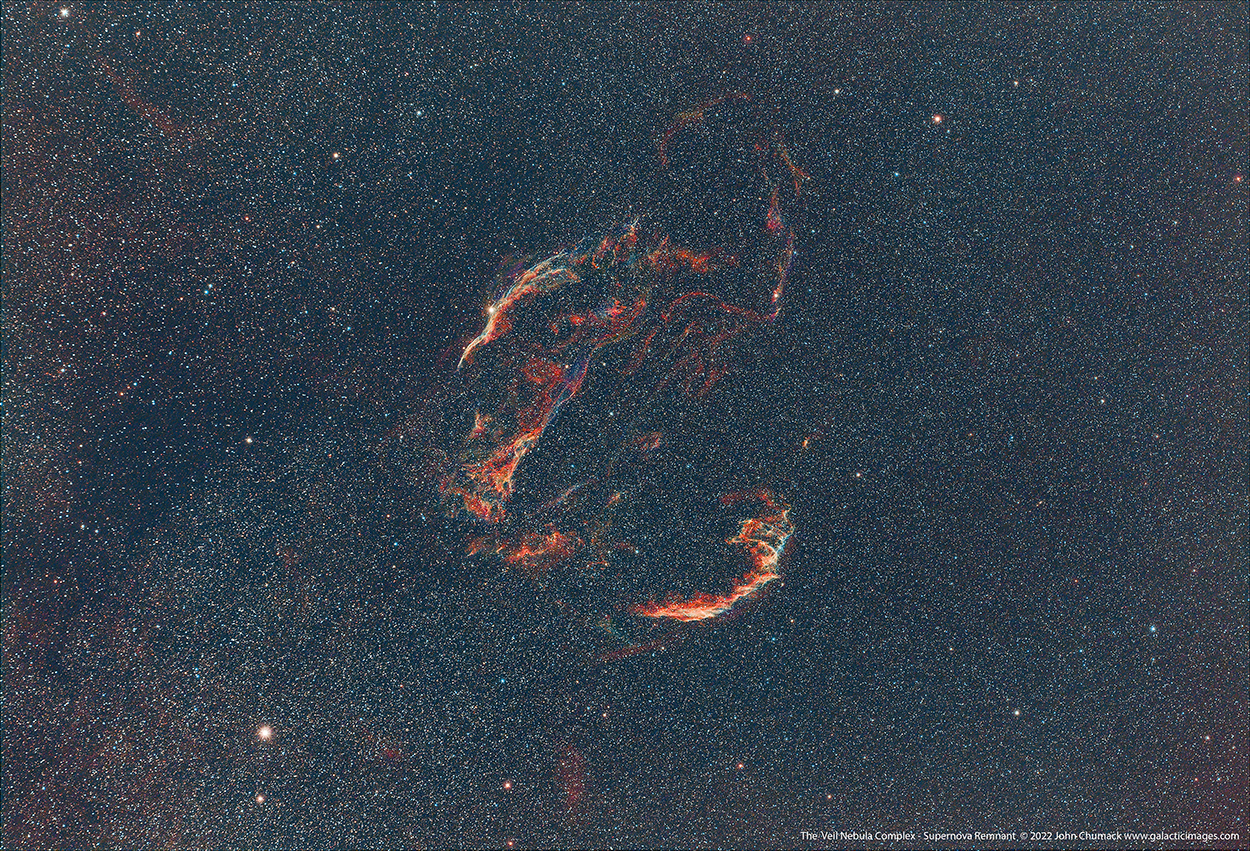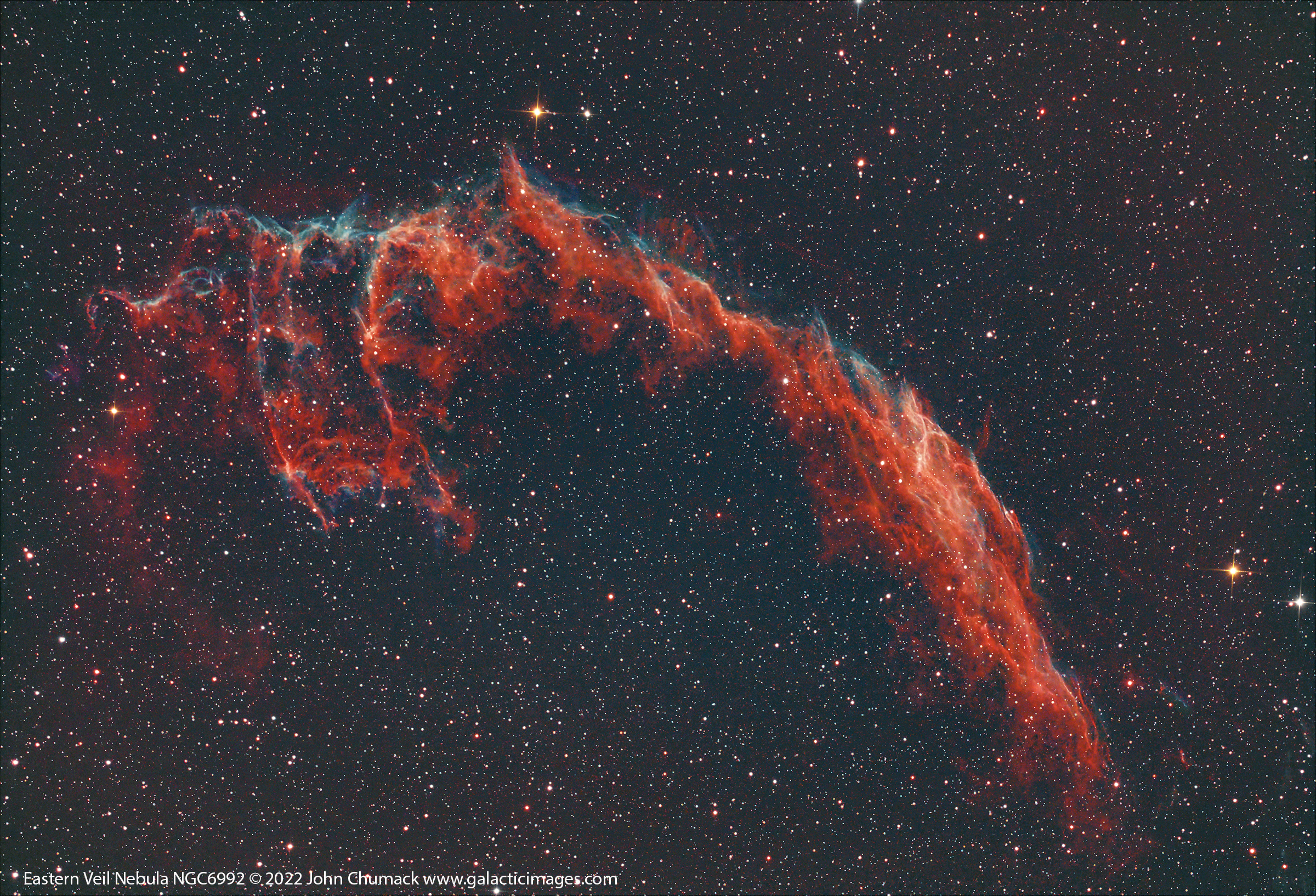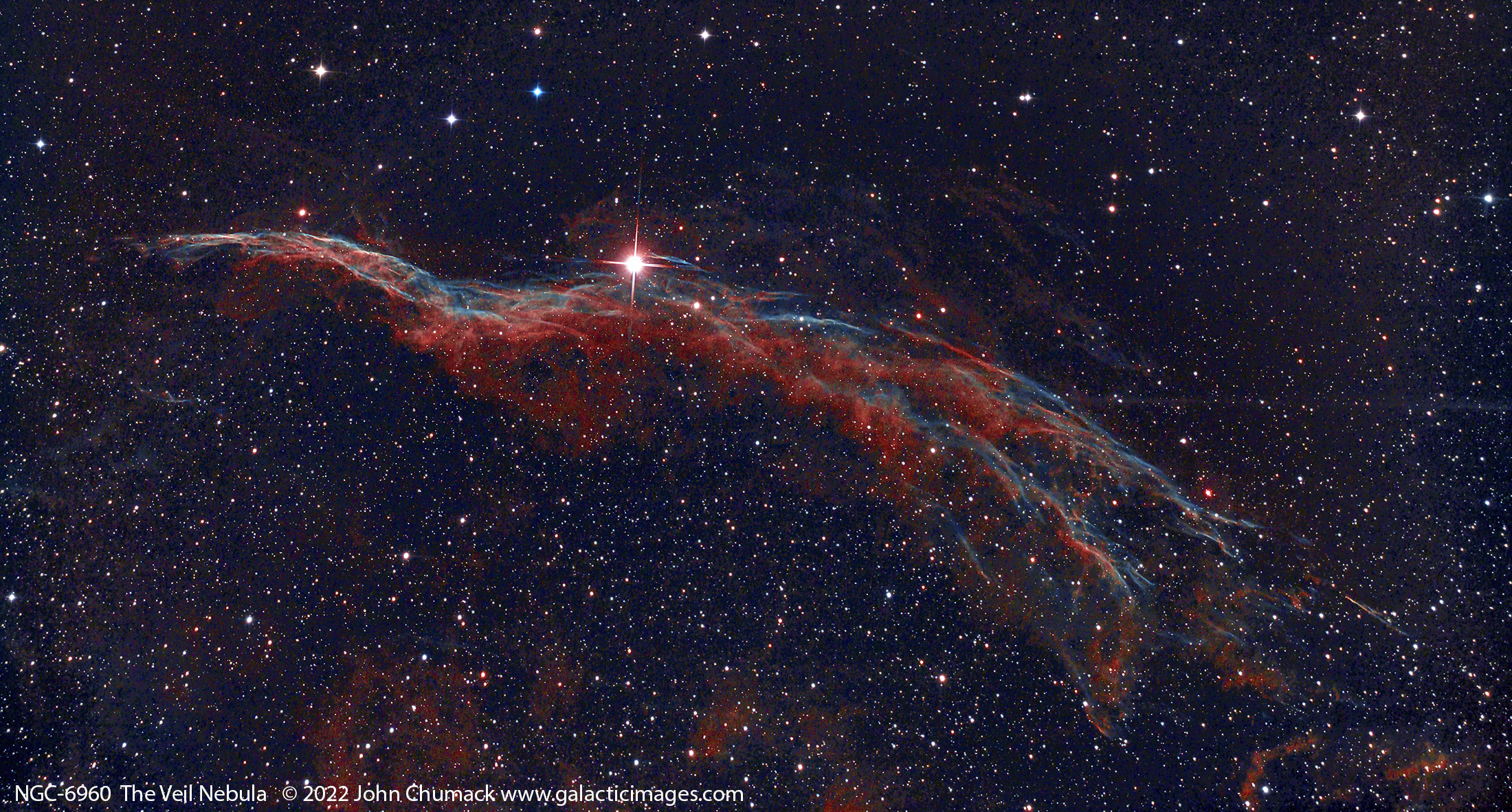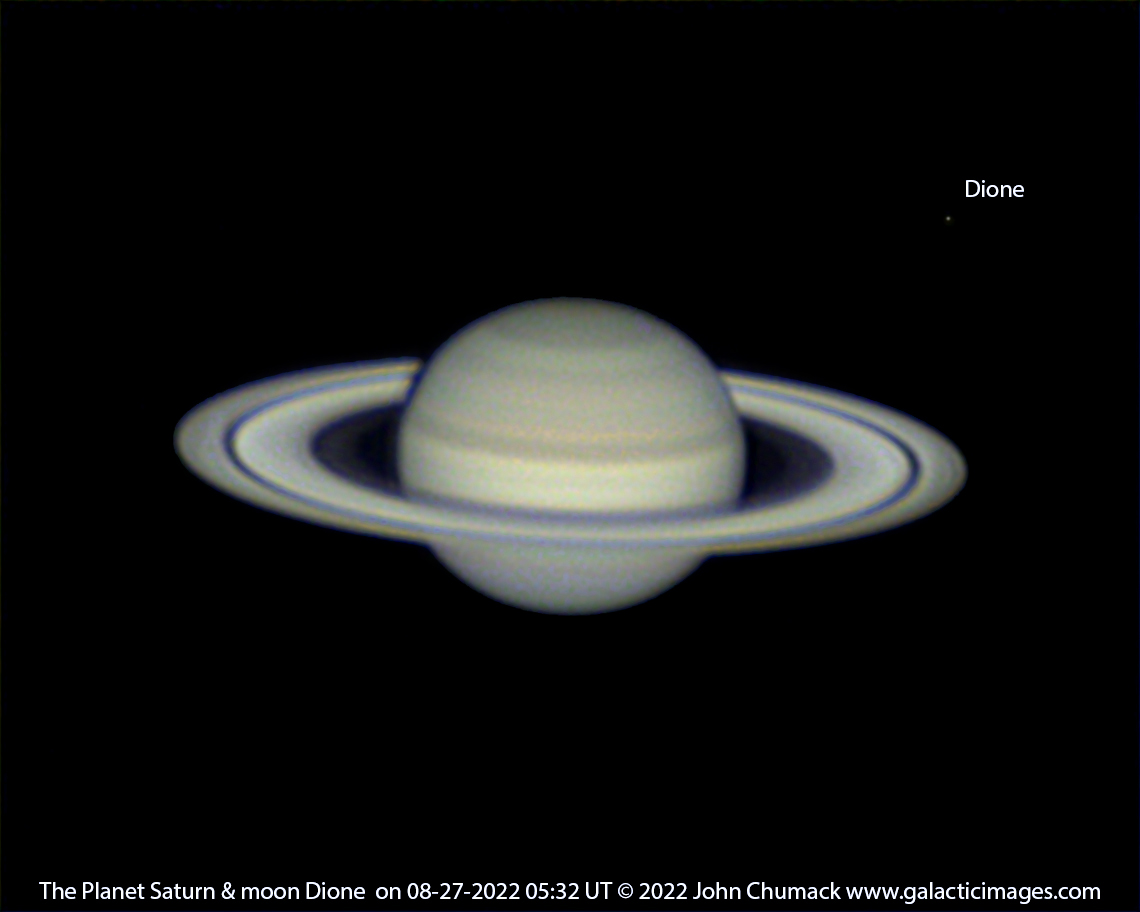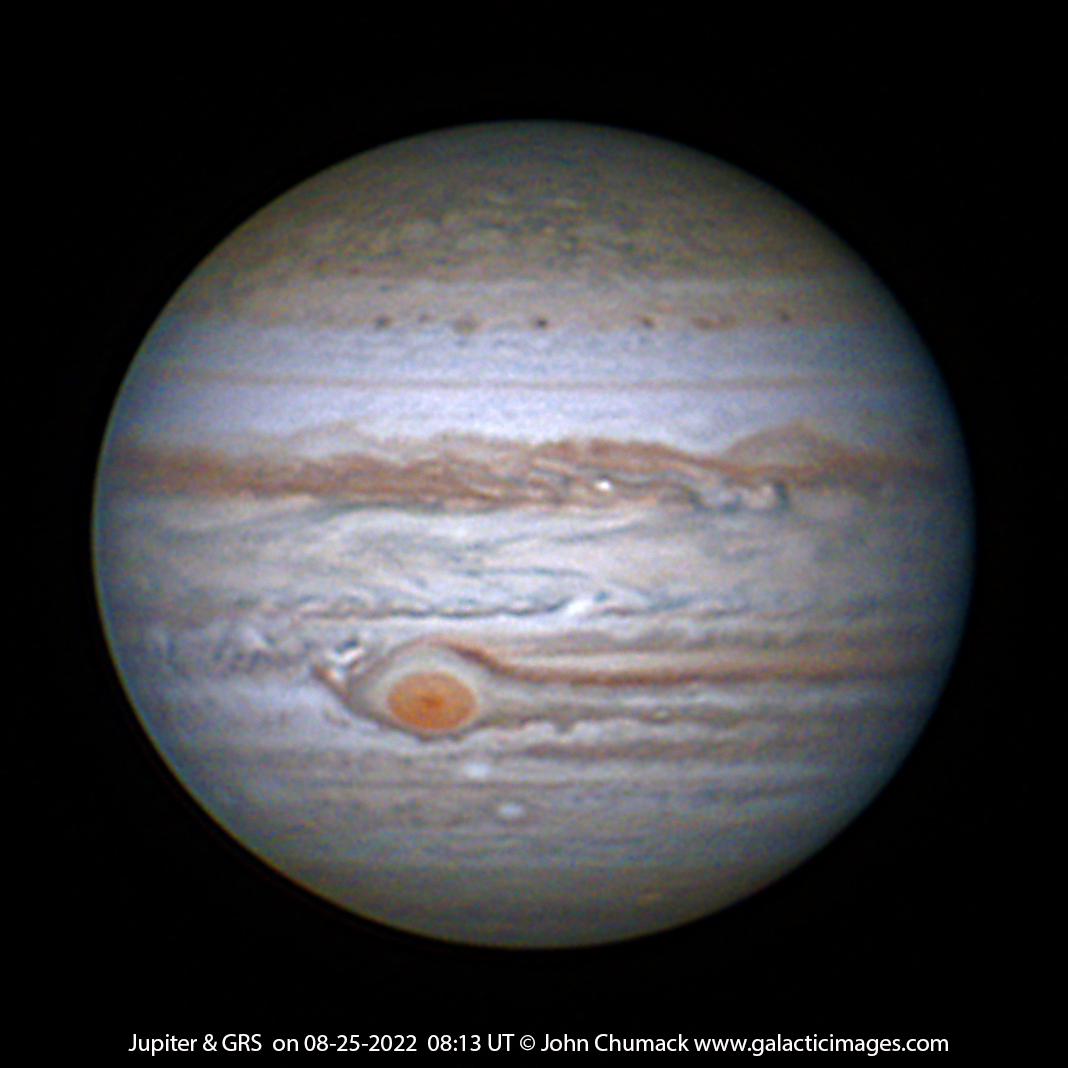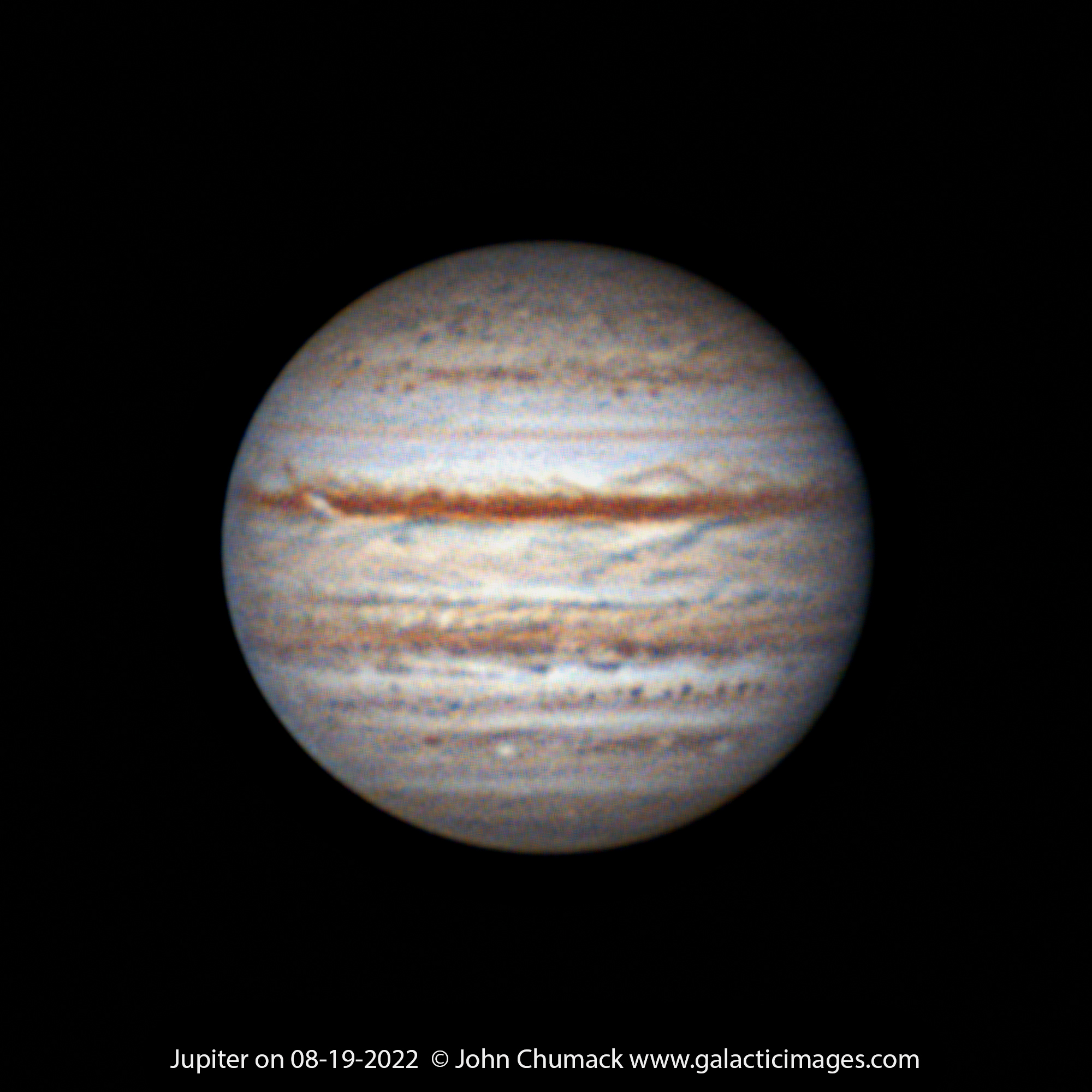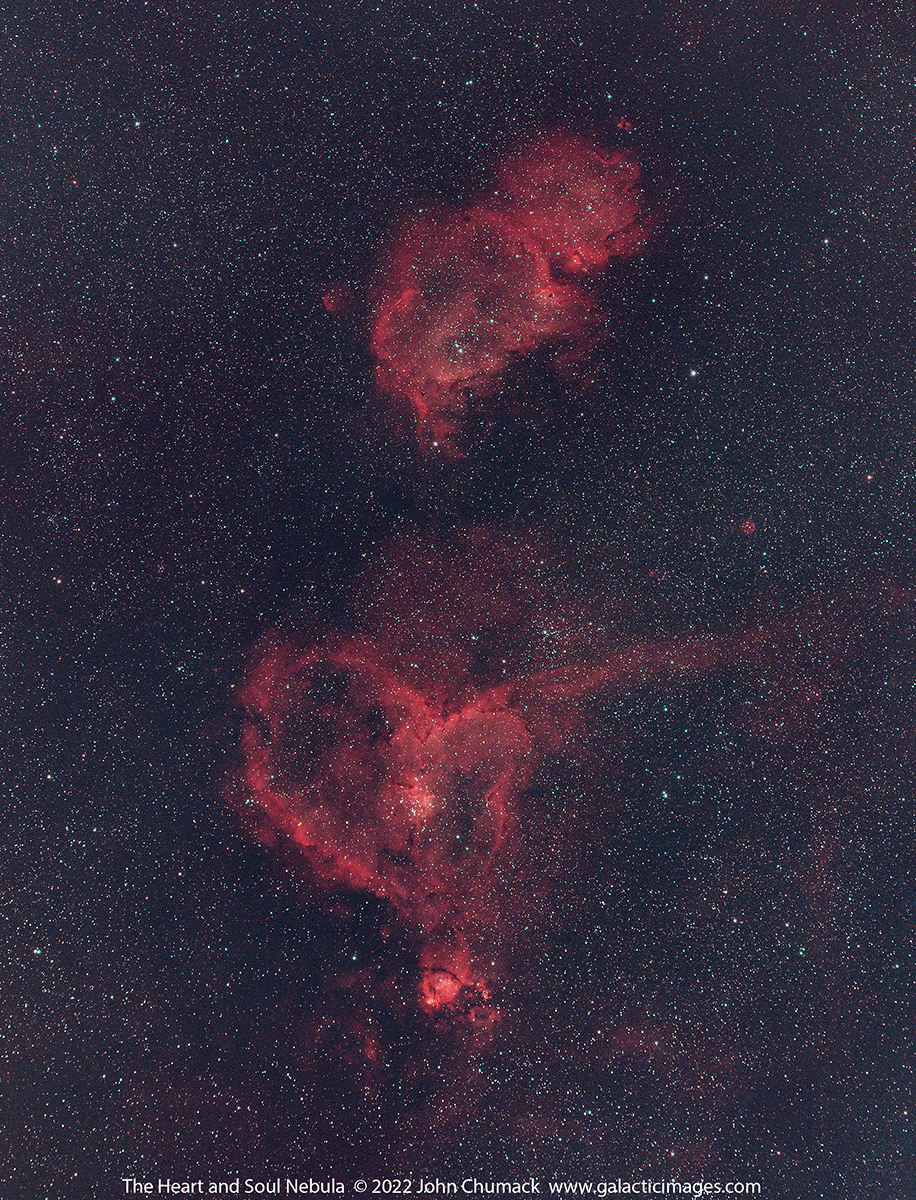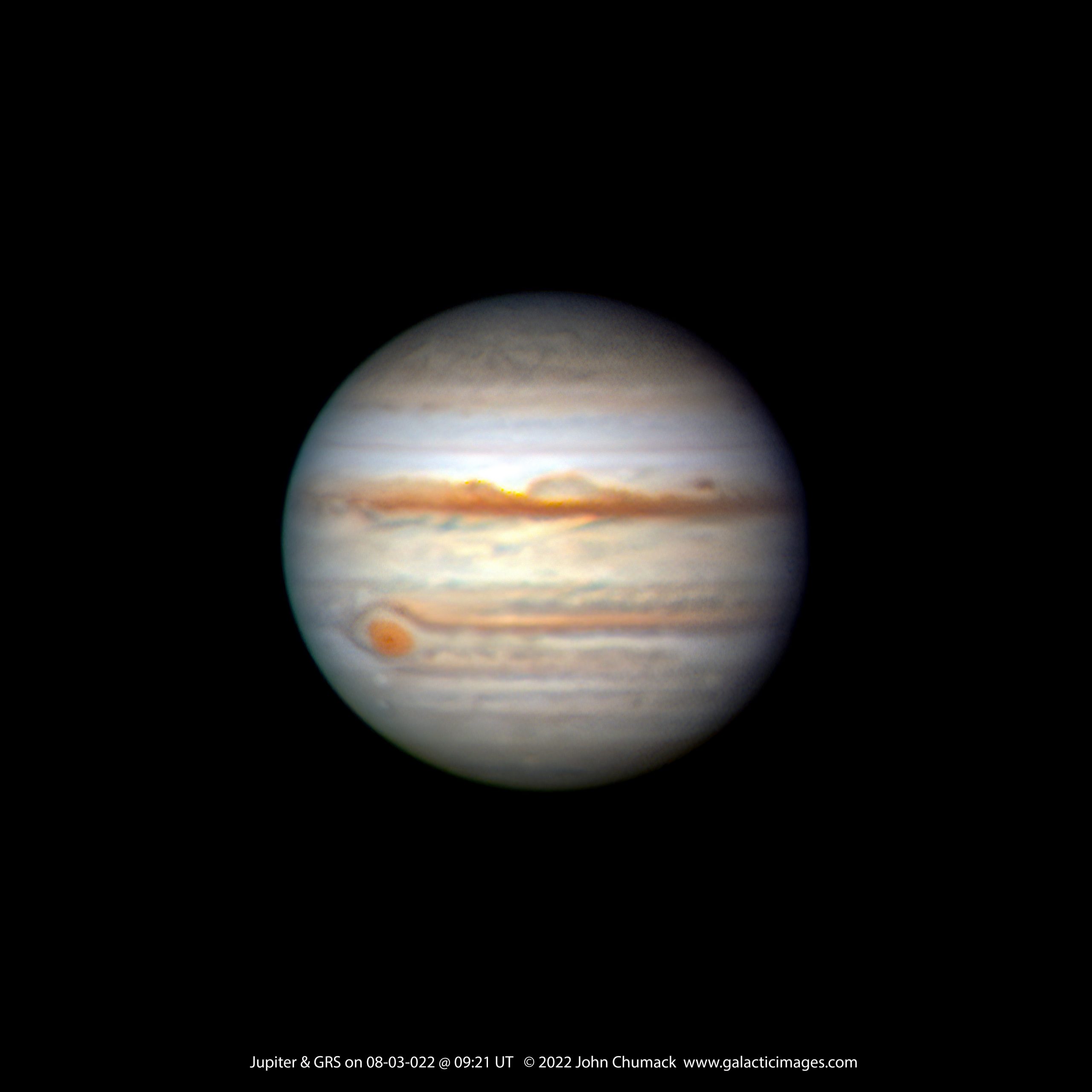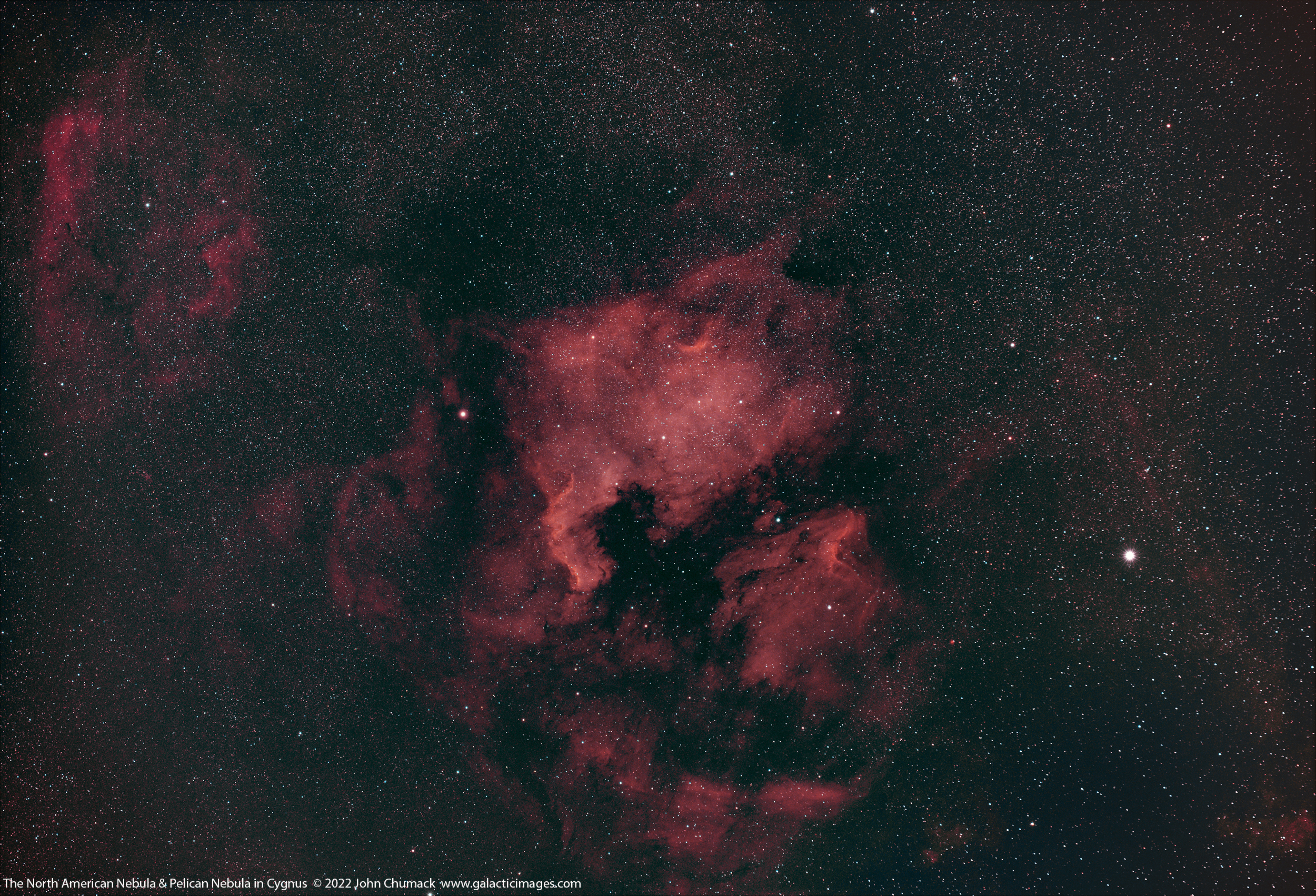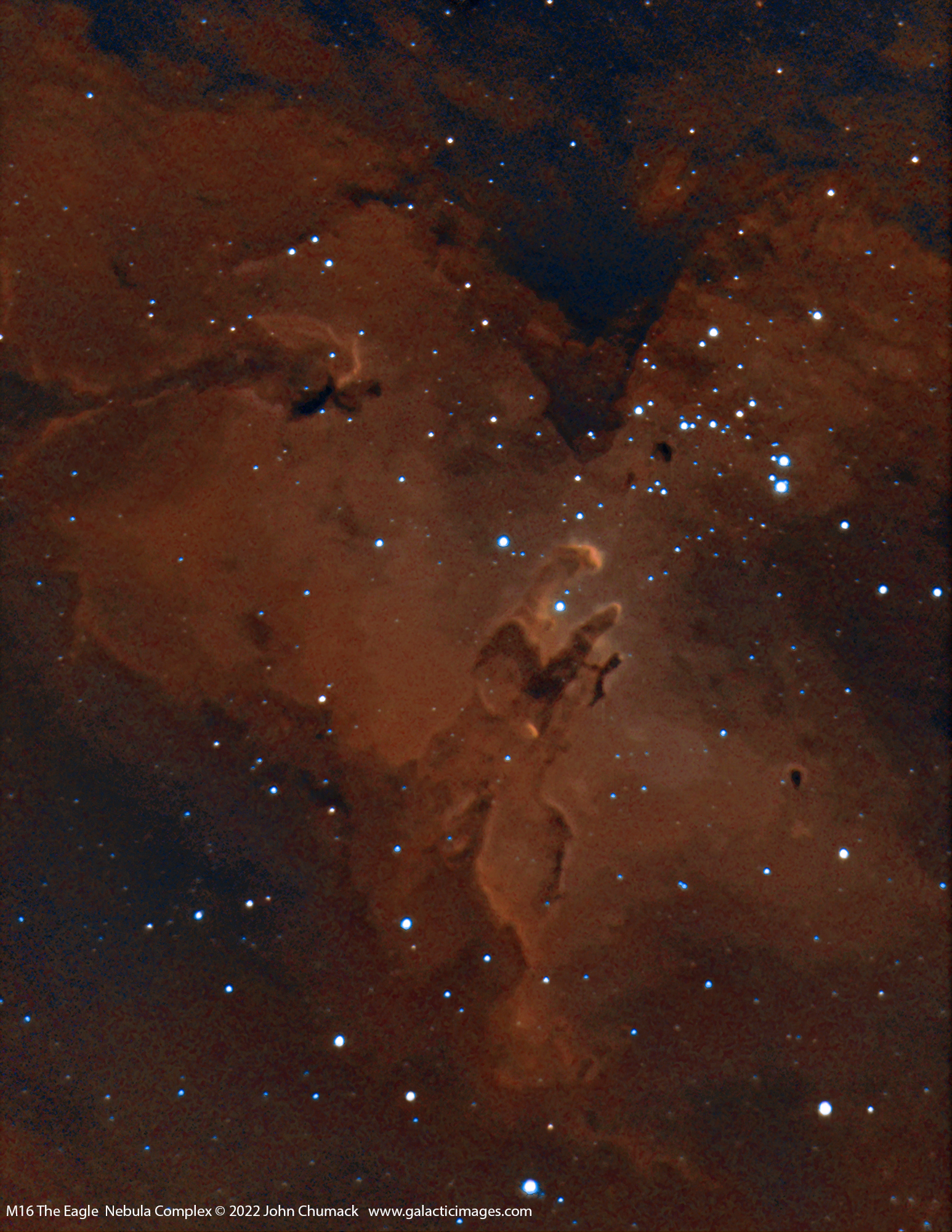The Entire Veil Nebula Complex – A Supernova Remnant in Cygnus.
The Eastern Veil Nebula or Caldwell 33
Here is another Section of the Veil Nebula known as Caldwell 33 or the Eastern Veil NGC6992 and NGC 6995 and IC 1430 The Bat,
put it up full screen and check out the details.
The Veil Nebula is a cloud of heated and ionized gas and dust in the constellation Cygnus.
It constitutes the visible portions of the Cygnus Loop, a supernova remnant, many portions of which have acquired their own individual names and catalogue identifiers.
The source supernova was a star 20 times more massive than the Sun which exploded between 10,000 and 20,000 years ago, this star would have been brighter than Venus at the time of
its explosion.
This spans about 100 light years across and is located at 1470 light years from Earth.
I captured this A Celestron 6 inch F5 Newtonian telescope, ZWO 294MC Cooled Cmos Camera, Coma Corrector, L-Enhance Filter, Bisque MYT mount, EAF, ASI Air app via WiFi to IPAD,
from my backyard in Dayton, Ohio (Bortle8). 21 x 120 second subs, 42 minutes total integration time on 08-24-2022.
Best Regards,
John Chumack
www.galacticimages.com
52 Cygni(bright star) and NGC-6960 The Veil Nebula – “The Witches Broom”
Saturn & Moon Dione on 08-27-2022
Here is My Best shot so far this season of Saturn,
A close-up of The Planet Saturn with its 10th magnitude moon Dione on 08-20-2022, Saturn just reach opposition earlier this month, and the Seeliger Effect was noticeable, back-scatter is occurring making the rings brighter. I can even see spokes in the Rings, and the well defined Cassini Division along with the A ring with Encke division, B, and C rings the darker inner Crepe ring noticeable.
Now that Saturn is past Opposition you can see the Planet’s shadow cast on to the rings in the back left side, Also you can see the Shadow of the Rings being cast onto the planets disk in the front as well. The top of the Planet shows the North Polar Hexagon and also visible are the subtle colors of the Equatorial Belts And Zones on the planets disk itself. Seeing was very good at moments 1:00 am local time, but it didn’t get stable until it reached the Meridian it still sits very low for me here in Ohio,
only 33.9 degrees off the Southern Horizon in Capricorn. So I have to wait until it clears my neighbors trees.
Dione is a moon of Saturn.
It was discovered by Italian astronomer Giovanni Domenico Cassini in 1684. It is named after the Titaness Dione of Greek mythology.
The mid-sized Moon Dione (Titan is the Largest in the Saturnian System) Dione is about ~700 miles in diameter and completes an orbit around Saturn every 66 hours(2.74 days).
Target=Saturn, Date: 270822, Time: 053239 UT, Magnitude: 0.34, Diameter: 18.63″, Resolution: 0.08″, Az: 192.58, Alt: 33.59, Phase: 1.00, CM: CMI=241.0° CMIII=33.9°, Best 25% of 15,372 SER frames, Fire-Capture, Autostakkert, Registax6, WinJupos, Adobe Raw CC 2022.
Camera: QHY5III462C Cmos, Scope: C-11 SCT, C-Max Barlow, ADC, FL: 7500mm, F-ratio: 26, Bisque MyT Mount.
Observer: John Chumack, Location: My backyard Observatory, Dayton, Ohio, Comment:Seeing: 8/10 pretty good.
Best Regards,
John Chumack
www.galacticimages.com
My best Jupiter Close-up so far this year on 08-25-2022
I’m so glad I finally got one good Stable night of Seeing here in the Midwest.
Here is my best close-up of Jupiter so far this season.
My jaw dropped when I finished processing my most recent data on 08-25-2022!
Finally!!!, it’s such a wonderful feeling when you can pull a decent image through all that muck in the sky, especially at 4:00am
when you are still half asleep and typically fighting our boiling atmosphere.
Target=Jupiter, Date: 250822, Time: 080813 UT, Mag: -2.83, Diameter: 48.04″, Resolution: 0.08″, Az: 186.72, Alt: 51.60,
Phase: 1.00, CM: CMI=145.5° CMII=7.8° CMIII=289.7°
Camera: QHY5III462C CMOS, Scope: Old Orange Tube C-11, FL: 7100mm,C-Max Barlow, ZWO ADC, F-ratio: 25,
Bisque MyT Mount.
Fire-Capture Software – The Best 25% of 16,484 frames, 186 FPS, SER video file
Post processing in Autostakkert, Registax6, WinJupos De-rotation, Adobe Raw CC 2022.
Observer: John Chumack, Location: Dayton, Ohio, Comment: Seeing: 8/10
pretty darn good for the Midwest.
As most of you know, I’m always trying to push the limits with my gear here in Ohio.
I hope you like it, and have a great weekend everyone!
Best Regards,
John Chumack
Jupiter’s Cloud Tops on 08-19-2022
Now the planets have cleared my neighbors trees by early morning, I can start capturing more images.
I’m using my old Orange tube Celestron C-11 Telescope (30+ years old), and it still produces nice views.
Target=Jupiter, Date: 190822, Time: 081117 UT, Mag: -2.79, Diameter: 47.38, Res: 0.08″, Az: 177.68, Alt: 51.97, Phase: 1.00,
CM: CMI=279.2° CMII=187.3° CMIII=107.6°
Camera: QHY5III462C, Scope: C-11 SCT, C-Max Barlow, ADC, FL: 7100mm, F-ratio: 25, Bisque MyT mount,
Best 5800 frames captured in Fire-Capture Software, Autostakkert, Registax6, Adobe Raw CC 2022.
Best Regards,
John Chumack
www.galacticimages.com
The Heart & Soul Nebula in Cassiopeia
The Jovian Cloud Tops on 08-03-2022
This time a closer look at the Jovian cloud tops.
The Planet Jupiter & The Great Red Spot on 08-03-2022 at 09:21 U.T. from my backyard observatory in Dayton, Ohio
Using Winjupos I measured The Great Red Spot in the South Equatorial Belt(SEB)at 15,618 km (9,704 miles) across.
right below the Great Red Spot there are two small white ovals visible as well, measuring 5-6km (3,278 miles) across each.
There is a large Arch feature(festoon) in the North Equatorial Belt (NEB) and I measured it at 19,715 km (12,250 miles) across
C-11 SCT Telescope at F20, 2x Barlow, ADC, Bisque MyT mount, QHY462 Color Cmos Planetary Camera, 10.5 ms exposure,
Fire-Capture Software, best 75% of 25,000 images stacked in Autostakkert, Wavelets in Registax6, Winjupos measurements & de-rotation.
Best Regards,
John Chumack
www.galacticimages.com


